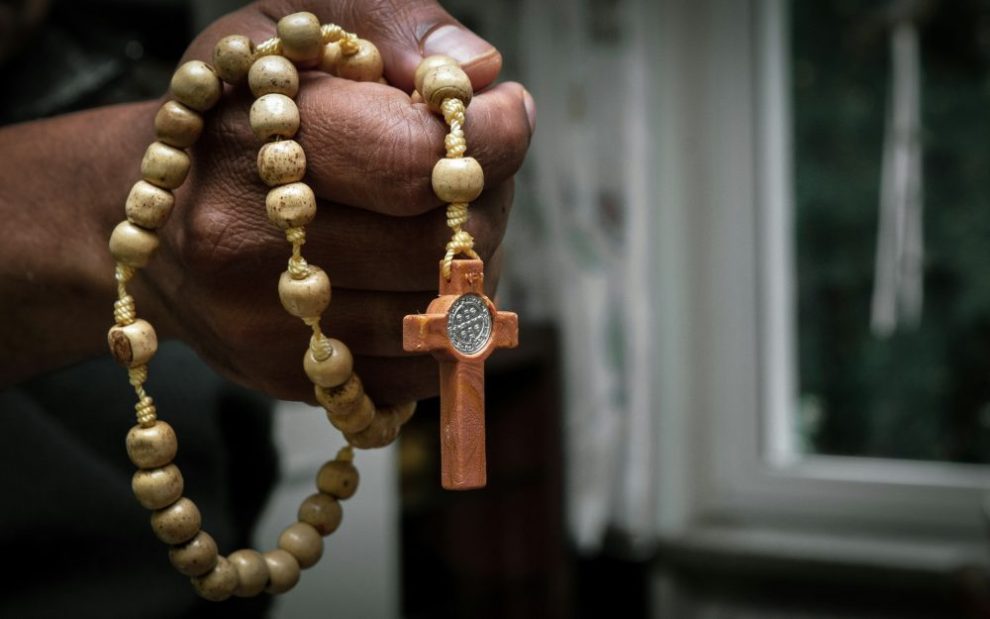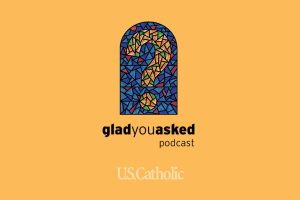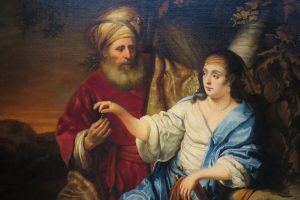Legend goes that the Virgin Mary gave the rosary to St. Dominic, founder of the Dominican Order. Dominic had been battling the Catharists, heretics who denied the incarnation of Christ. In response to his prayers, according to tradition, Mary appeared and handed Dominic a rosary, assuring him that meditating on her son’s life would eradicate Catharists’ heresy. Another tradition attributes the origins of the rosary to a 15th-century Carthusian monk, also named Dominic.
Regardless of which tradition is accurate, the rosary as we recognize it today dates back to the 16th century. However, the practice of keeping track of prayers with beads or other markers goes back much further. Early Christians counted out their prayers using whatever they had at hand: small stones, knots on a rope, or even marks in soft earth. The desert fathers, in particular, used such methods to keep track of their prayers as they prayed all 150 psalms every day.
Ordinary Christians, many of whom were illiterate, couldn’t easily pray the psalms. Over time, however, simpler prayer forms developed that allowed everyone to share in the spiritual life of the church. The Hail Mary, which derives from Luke 1:28 (“Greetings, favored one! The Lord is with you”) and 1:42 (“Blessed are you among women, and blessed is the fruit of your womb”), became a popular prayer for Christians to memorize. Over time, other prayers became associated with the rosary as well, including the Lord’s Prayer and the Glory Be. The core of the rosary, though, remains meditation on the lives of Christ and his mother.
Over the centuries, the sequence of gospel episodes used for meditation has developed and taken different forms, with Pope Pius V formalizing the final form of the traditional rosary as we know it in 1569. These meditations—the joyful, sorrowful, and glorious mysteries—cover the birth, passion, and resurrection of Jesus. Later, in the early 21st century, St. Pope John Paul II proposed an additional set of mysteries, the luminous mysteries, which focus on Christ’s earthly ministry.
Today, the word rosary can refer either to the collective group of prayers associated with the practice or to the beaded chain Catholics use to count said prayers. Most Catholics conflate the two, but the beads can be used for other devotions as well. Perhaps the most well-known set of prayers prayed with the rosary beads other than the rosary itself is the Divine Mercy Chaplet, which is based on Jesus’ purported revelations to St. Faustina Kowalska in the 1930s.
The rosary, along with other prayer chaplets, is a private devotion that the church approves of and encourages Catholics to use. This does not mean, however, that Catholics are obliged to say the rosary, as it isn’t considered a public liturgy of the church. Nevertheless, Catholics may find the rosary a helpful guide for reflecting on the gospels, whether they pray it alone or gathered in a church with others.
This article also appears in the August 2025 issue of U.S. Catholic (Vol. 90, No. 8, page 49). Click here to subscribe to the magazine.
Image: Unsplash












Add comment